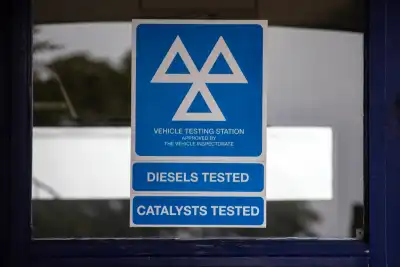
Pothole-related breakdowns have surged by a quarter this summer compared with last year, according to new data from the RAC’s Pothole Index.
Between July and September, RAC patrols dealt with 5,035 breakdowns linked to poor road surfaces - up 25% from 4,040 during the same period in 2024.
Looking at the wider picture, from October 1, 2024 to October 1, 2025, drivers suffered 25,758 pothole-related incidents - an average of 71 a day. Repair bills for family cars can reach as much as £590.
This represents an 11% rise in incidents compared to the previous 12 months.
Common issues reported by RAC teams included broken suspension springs, bent wheels and damaged shock absorbers.
The RAC, along with groups such as the Road Surface Treatments Association (RSTA) and the Roam Emulsion Association (REA), has long called for local authorities to invest more in preventative road maintenance instead of relying on quick fixes.
Their latest warning comes as 59% of drivers say their local roads are in worse condition than a year ago. Almost half (47%) told the RAC that poor road maintenance is their number one frustration for 2025. While this is still high, it’s down sharply from 73% in 2024.
Additionally, 29% of drivers reported pothole-related damage to their vehicles in the past year.
RAC head of policy Simon Williams said: “The fact more drivers fell foul of potholes this summer is troubling. It highlights the huge challenge of bringing our roads back to a reasonable standard after years of neglect. Every pothole breakdown causes hassle, frustration and costs that can reach up to £590. For those on two wheels, they’re a serious safety risk.
“However, there are small signs of improvement. A growing number of drivers say their local roads are slightly better than a year ago. The Government is also pressuring councils to set out exactly what preventative maintenance they are doing - something we’ve been calling for.”
He added: “We’re still a long way from having roads that drivers deserve, but we hope the decline has been halted. Multi-year funding plans should give councils more certainty to plan better road maintenance and stop potholes from forming in the first place.”
Mike Hansford, chief executive of the RSTA, echoed the call for long-term solutions: “Highway authorities should prioritise cost-effective preventative treatments to protect roads that are already in good condition. They should also ensure pothole repairs are as permanent as possible and consider treating roads in the following summer to prevent further damage.
“On heavily damaged roads, costs can even be reduced by recycling existing materials. Authorities that use these practices often have the best road conditions and the fewest potholes per mile.”




